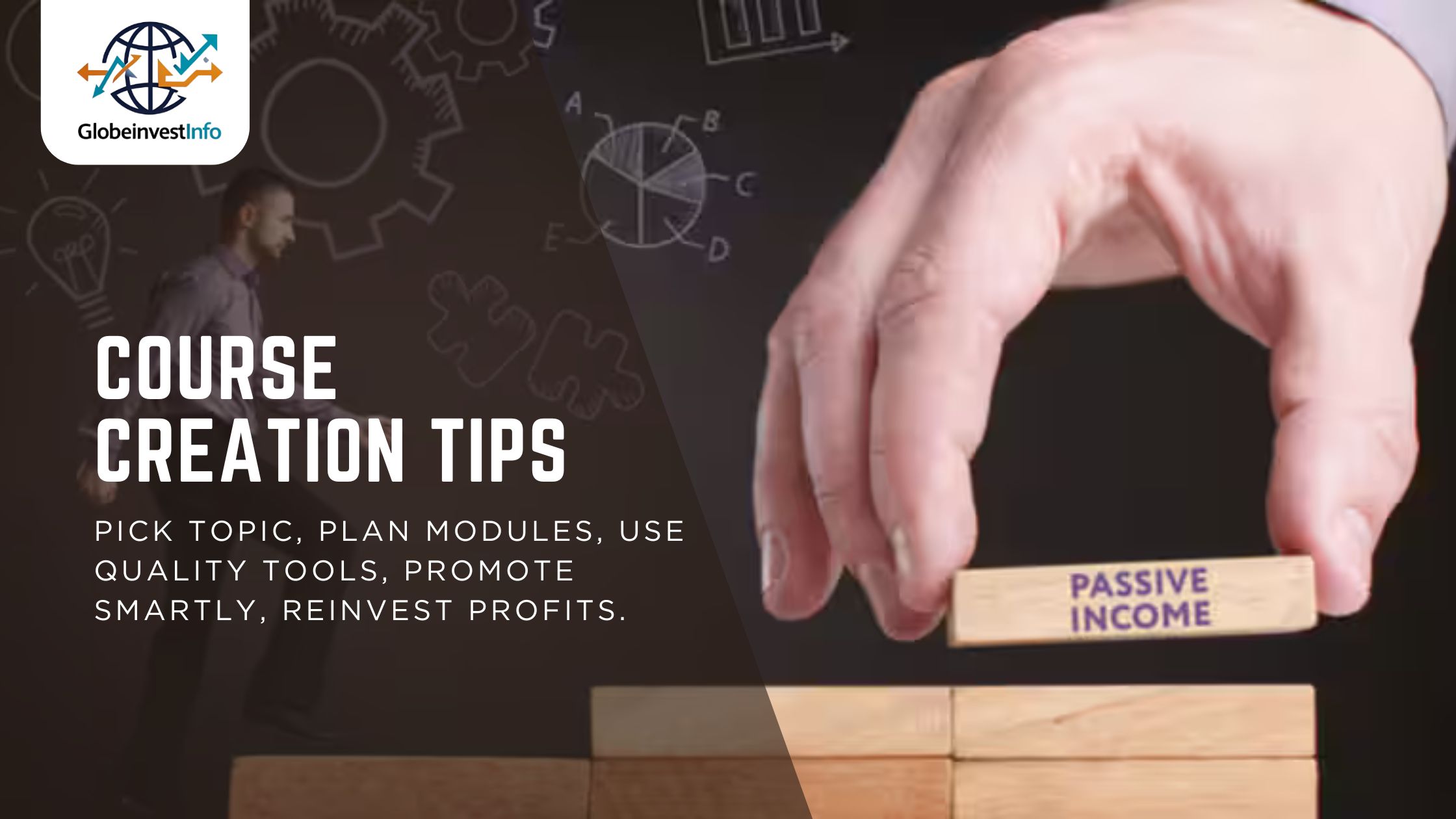Introduction
Many Americans want financial freedom but feel trapped by limited income streams. Relying only on salaries or savings often falls short of long-term goals. Online courses provide a proven way to generate passive income by sharing skills and knowledge.
Once created, a course can earn for years with only periodic updates, giving educators, professionals, and hobbyists alike the chance to turn expertise into cash flow.
Quick Read
- Online courses convert knowledge into passive income opportunities.
- Choose topics that solve problems people actively search for.
- Quality production and clear structure build trust and sales.
- Platforms like Udemy or Teachable simplify hosting and distribution.
- Reinvest profits into marketing for long-term scalability.
What is Passive Income in Online Courses?
Passive income means earning with little daily effort. With online courses, this comes from upfront work—planning, recording, and publishing content—that continues generating sales long after launch.
Courses appeal to learners worldwide, giving creators recurring income while they focus on other goals. Unlike freelancing or teaching in person, digital courses scale without extra hours worked.
Key Steps to Create a Successful Online Course
Step 1: Choose the Right Topic
The best courses solve real problems. Look for areas where you have expertise and where demand exists. Popular niches include technology, personal finance, health, career development, and hobbies like photography or cooking.
Tips for selecting a topic:
- Identify what people frequently ask you for help with.
- Research search trends and student demand.
- Check existing courses and find gaps you can fill.
Step 2: Plan and Structure the Course
A strong outline makes learning easier and keeps students engaged. Break lessons into manageable modules with clear learning outcomes. Add quizzes, templates, or case studies to boost value.
Step 3: Produce Quality Content
While you don’t need expensive equipment, quality matters. Use a good microphone, clear visuals, and a distraction-free background. High production value builds trust and encourages recommendations.
Step 4: Choose the Right Platform
You can host on:
- Marketplaces (Udemy, Skillshare) – broad reach but lower pricing control.
- Self-hosted platforms (Teachable, Thinkific) – more control and branding, but requires your own marketing.
Step 5: Launch and Promote
Promotion is essential. Use email lists, social media, blogs, and partnerships. Consider offering free mini-courses or webinars to attract leads.
Step 6: Reinvest and Improve
Update your content regularly, reinvest profits in ads, and collect feedback to strengthen your course over time.
Smart Strategies for Long-Term Success
Diversifying Income Streams
Don’t rely on just one course. Expand into related topics, bundle courses, or create membership sites for recurring revenue. Combining online courses with other passive income options like REITs or P2P lending creates stronger stability.
Managing Risk
Trends and platforms change. To reduce reliance on one source:
- Publish on multiple platforms.
- Keep your own website and email list.
- Continuously refresh outdated content.
Tax Considerations
Income from courses is taxable in the U.S. as business or self-employment income. Many creators use LLCs or business accounts for clarity. Tracking expenses like software, equipment, and ads can reduce taxable income.
Pros & Cons of Creating Online Courses
| Pros | Cons |
|---|---|
| Scalable passive income with global reach | Requires upfront time and effort to build |
| Low overhead compared to traditional businesses | Marketplaces take commission from each sale |
| Establishes authority and personal brand | Competition can be high in popular niches |
| Flexible—work anywhere with internet | Marketing and updates needed to stay relevant |
| Content can sell for years after launch | Quality expectations from learners are rising quickly |
FAQs
Q1: How much passive income can an online course generate?
A1: Earnings vary widely. Some creators make a few hundred dollars monthly, while others generate six-figure yearly incomes depending on topic demand, course quality, and marketing.
Q2: Do I need to be an expert to create a course?
A2: You don’t need advanced degrees—just solid knowledge and the ability to explain concepts clearly. If you can help people solve problems, your course has value.
Q3: Which platforms are best for hosting courses?
A3: For beginners, marketplaces like Udemy are easiest. For greater control and higher margins, self-hosted platforms such as Teachable or Thinkific work well.
Q4: How long does it take to build a course?
A4: Depending on scope, many courses take 2–6 weeks to plan, record, and publish. Smaller, focused courses can be created in less time.
Conclusion
Online courses transform knowledge into sustainable passive income. With upfront effort, creators enjoy long-term dividends from students worldwide. By picking the right topic, producing quality content, and promoting effectively, anyone can turn their expertise into a profitable asset.
The most successful course creators diversify, update content regularly, and treat their courses like a long-term business. Start small, refine as you go, and scale for steady income.
For more ideas on building lasting wealth, check out our Passive Income blogs. Take action today—your skills could be your most valuable investment.
Kelsey Johnson is a seasoned business writer specializing in strategy, marketing, and entrepreneurship. Her concise, insightful blogs help professionals drive growth and make smarter business decisions.

